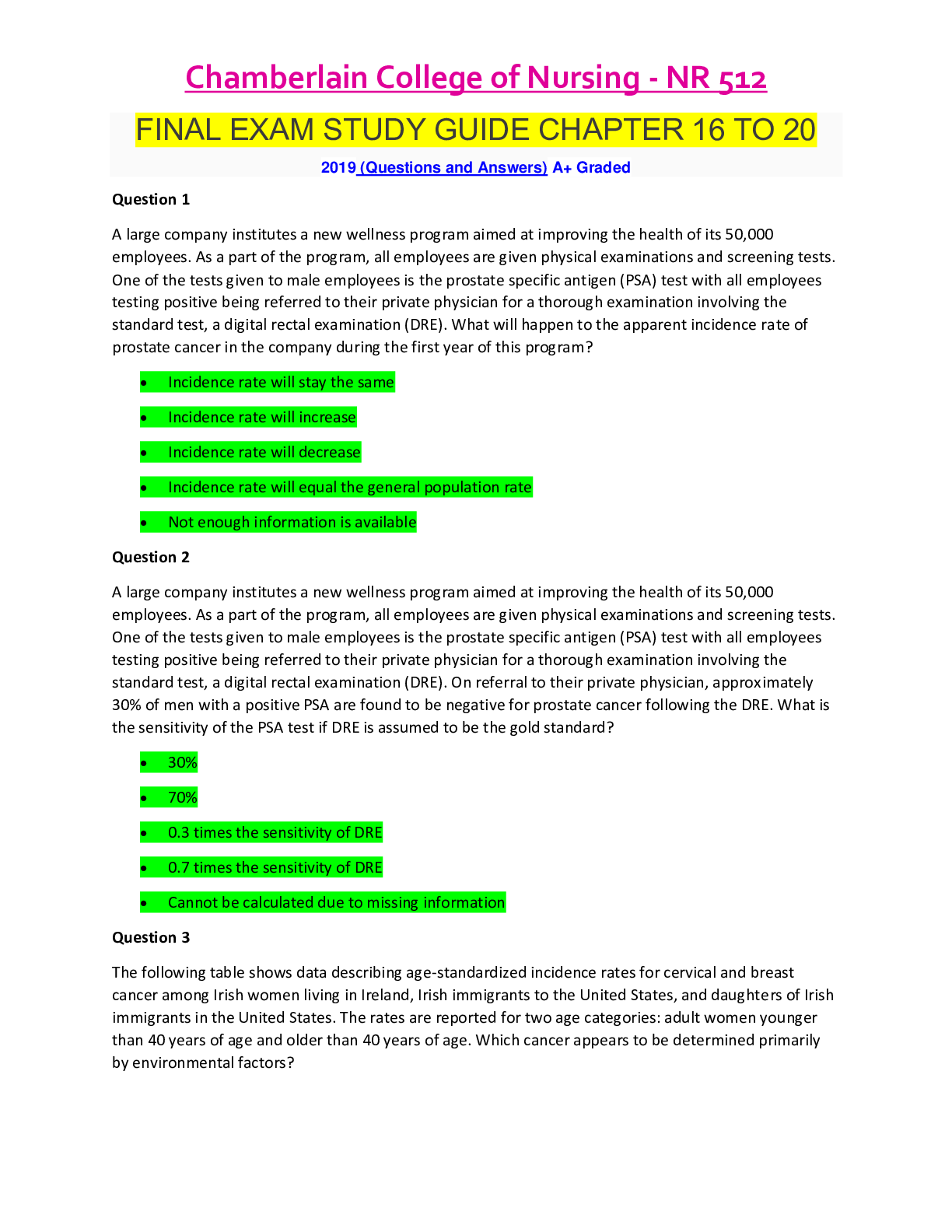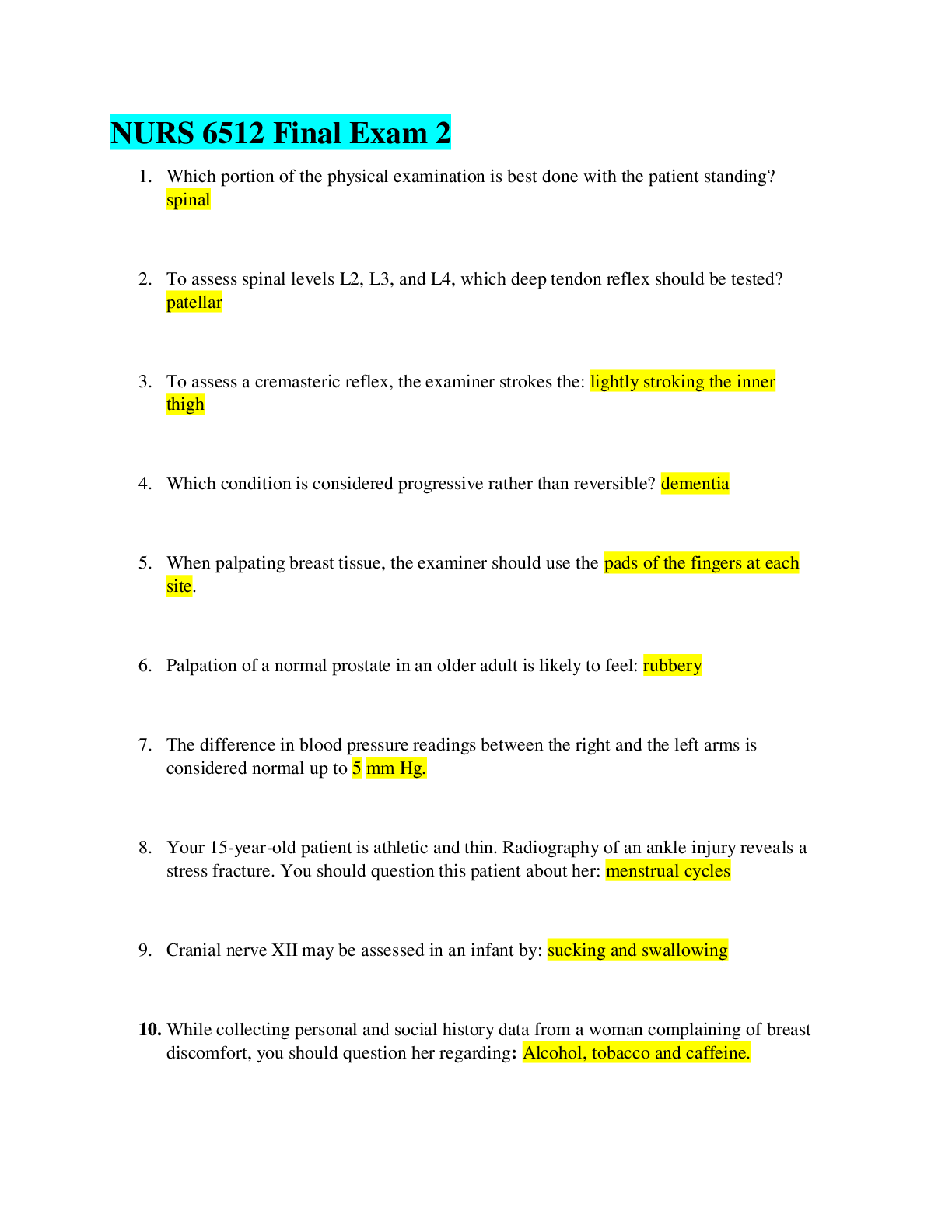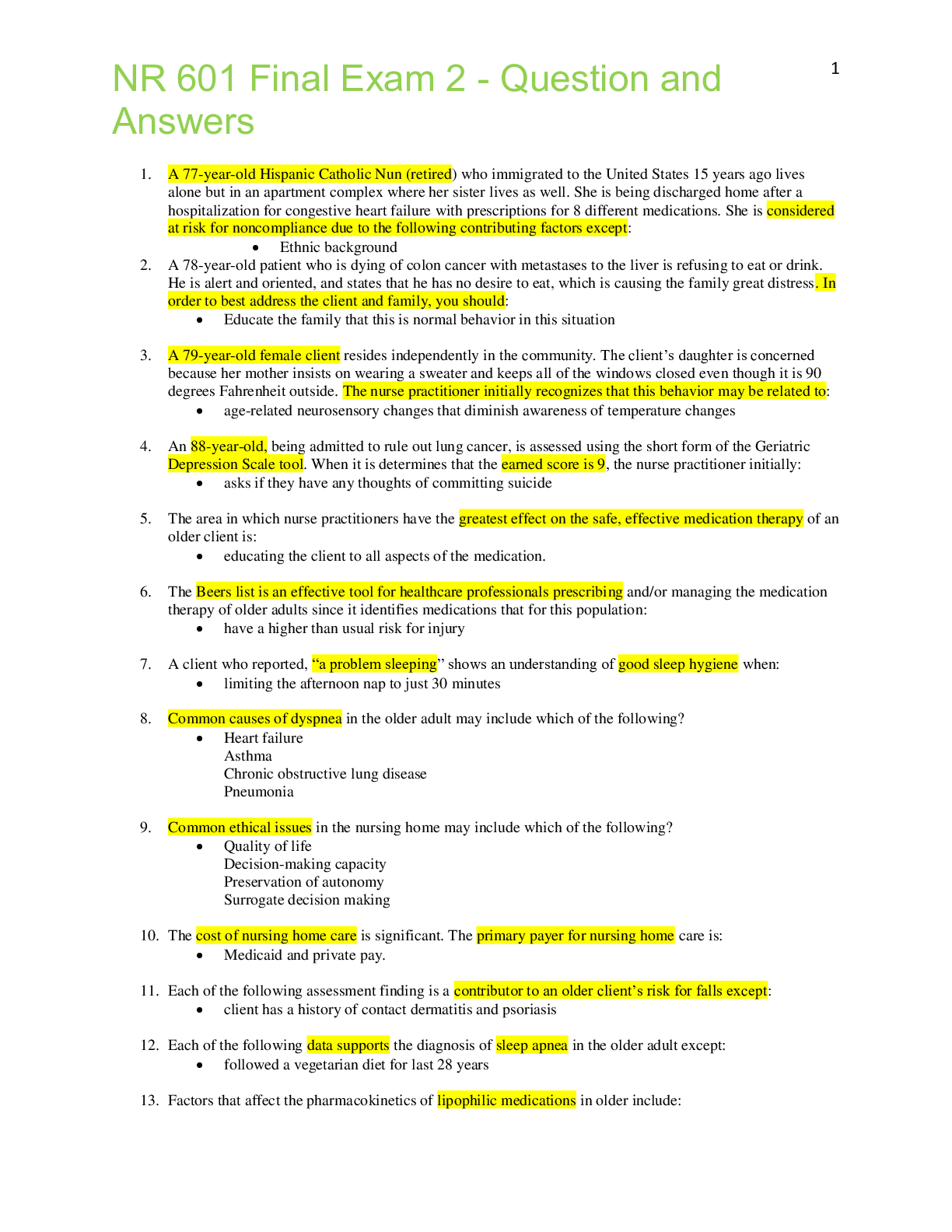Operations Management > EXAM > OPS 571 Final Exam 2 (All)
OPS 571 Final Exam 2
Document Content and Description Below
OPS 571 Final Exam 2 1: Identify an advantage of pure projects. Team pride, motivation, and commitment are high. Team members have authority over the project. Organizational goals and pol... icies are upheld. Duplication of resources is eliminated. 2: Define synchronous manufacturing as stated by Goldratt’s theory. It is a production process in which machines are the critical resource used for scheduling. It is the optimization of the rate at which cash is generated by production through sales. It is a production process organized to achieve the goals of the firm. It is an integrated set of activities designed to achieve high quality and high levels of production with minimal inventories of raw materials. 3: A shopkeeper purchases raw materials to manufacture souvenirs for a local event that happens once every five years. In this case, identify the model that the shopkeeper is most likely to use to maintain stock. Fixed–order quantity model Fixed–time period model Lot sizing model Single-period model 4: __________ are used for decisions that are related to aggregate and strategy demand. Process assessments Periodic review systems Strategic forecasts P-models 5: __________ is the characteristics of a product in terms of quality that are sorted as either conforming or nonconforming to specification. A throughput rate The capability index An attribute A learning curve 6: Define lead time. It is the time required to attend to a customer order. It is the time required to position inventory in the supply chain. It is the time required to achieve high customer service with minimum levels of inventory investment. It is the time required to produce a variety of products typically at lower volume levels. 7: __________ is the design, operation, and improvement of the processes that create and deliver a company’s essential products and services. Inventory control Operations and supply chain management Product routing Aggregate sales and operations planning 8: __________ determines the amount of inventory, which includes parts, components, and materials, necessary to produce a product. Material requirements planning GAP analysis Break-even analysis Dynamic programming 9: __________ is the ratio between the actual amount of time a resource is activated for and the total amount of time the resource is available for use. Pacing Service rate Lead time Utilization 10: Rachel performs an analysis in which she analyzes the performance of the clients of her organization relative to the expectations of the client’s customers. In this scenario, Rachel is most likely using a __________. bar chart gap analysis Gantt chart Pareto analysis 11: Define customer order decoupling point. It is the time required to attend a customer order. It illustrates the method by which a company’s strategy is delivered through a set of supporting activities. It involves the analysis of current business data to better solve business problems using mathematical calculations. It is the positioning of inventory in a supply chain. 12: _________ shows the relationship between the total number of units produced and the unit production tim A Poisson distribution Cycle time Service rate A learning curve ....continued [Show More]
Last updated: 2 years ago
Preview 1 out of 8 pages

Buy this document to get the full access instantly
Instant Download Access after purchase
Buy NowInstant download
We Accept:

Also available in bundle (1)

OPS 571 Final Exam 1 and 2
OPS 571 Final Exam 1 and 2
By YourTutor 4 years ago
$19.5
2
Reviews( 0 )
$12.00
Can't find what you want? Try our AI powered Search
Document information
Connected school, study & course
About the document
Uploaded On
Feb 10, 2021
Number of pages
8
Written in
Additional information
This document has been written for:
Uploaded
Feb 10, 2021
Downloads
0
Views
131


























